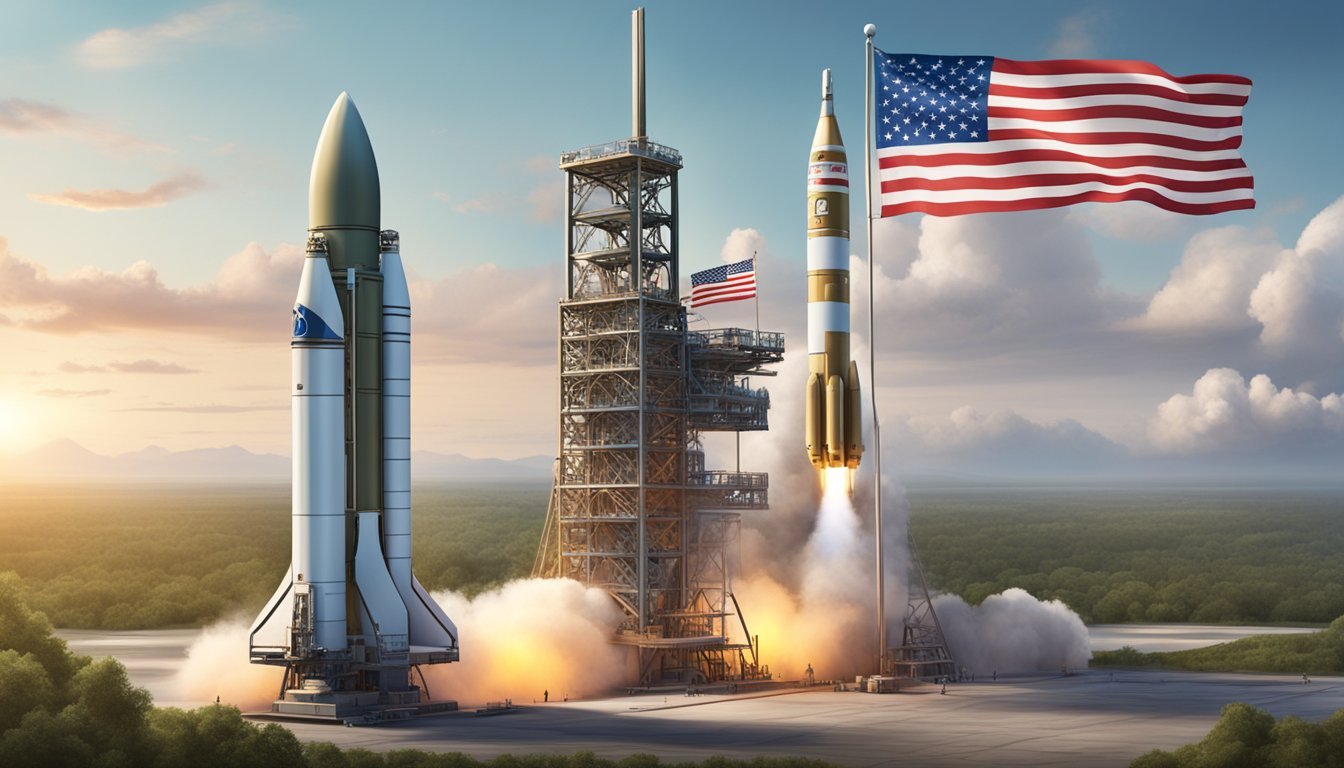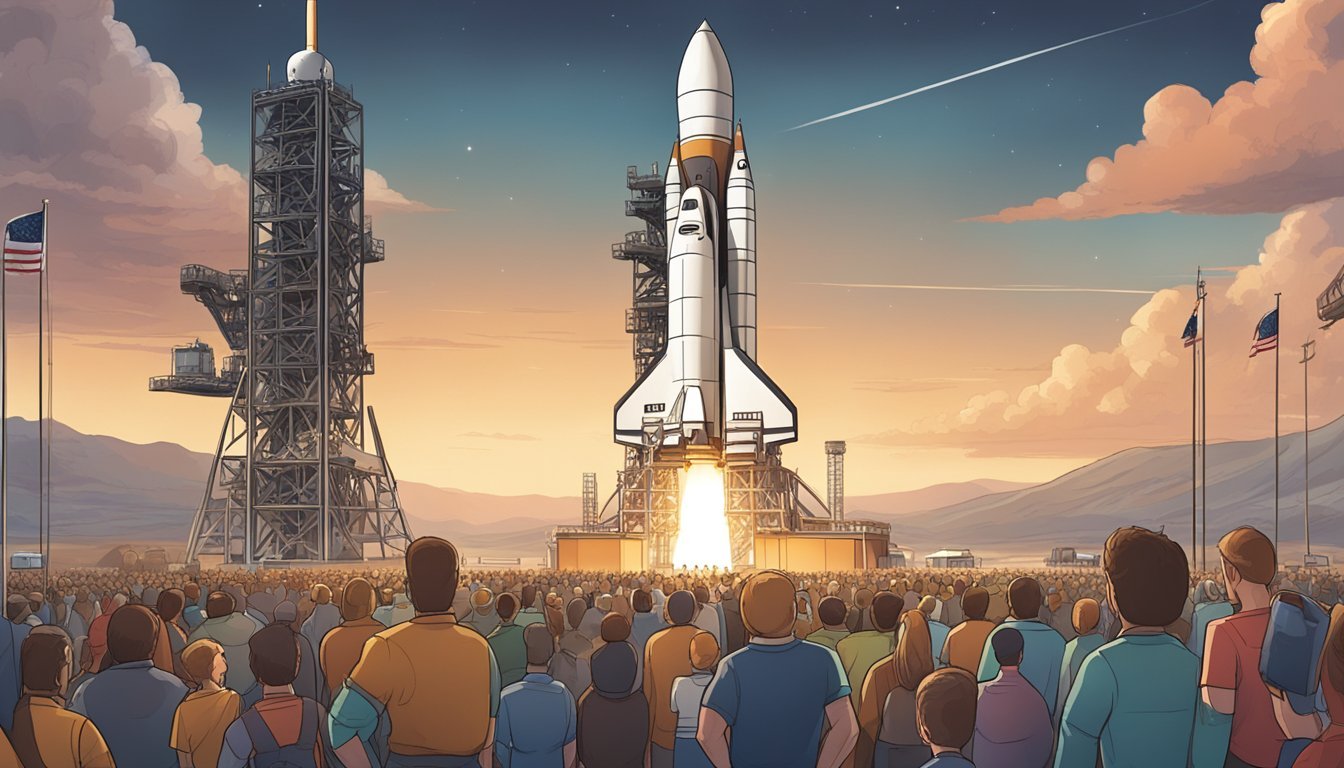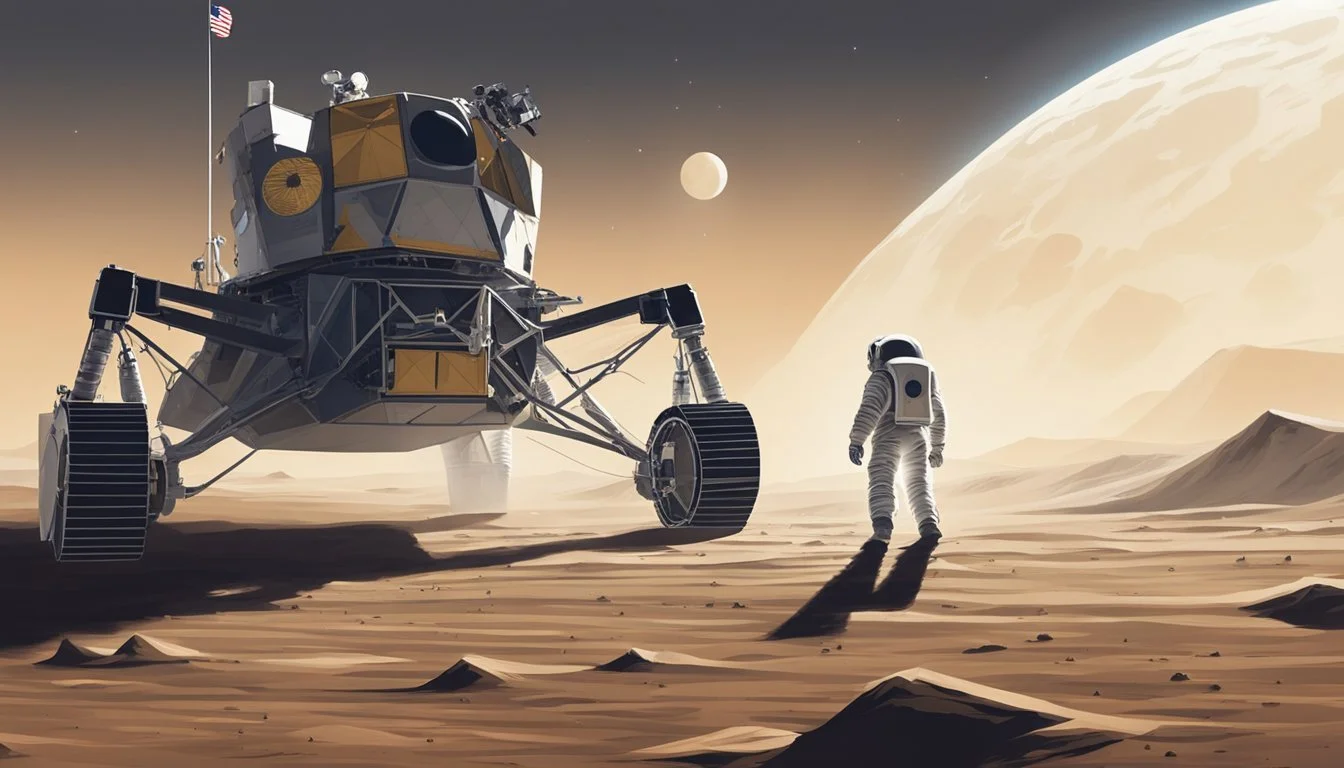9 Documentaries on the Space Race Between the USA and USSR
Cold War's Ultimate Competition
The Space Race between the United States and the Soviet Union marked a pivotal period in 20th-century history. This intense competition for supremacy in spaceflight capabilities captivated the world's attention and drove rapid advancements in aerospace technology. From the launch of Sputnik 1 in 1957 to the Apollo moon landings, the Space Race shaped global politics and scientific progress.
Documentaries offer a compelling way to explore the key events, technological breakthroughs, and human stories of the Space Race. These films provide viewers with insights into the scientific challenges, political tensions, and personal sacrifices that defined this era. Through archival footage, interviews with astronauts and engineers, and expert analysis, documentaries bring the excitement and drama of the Space Race to life for modern audiences.
1) "The Cold War and Beyond" by PBS
"The Cold War and Beyond" is a comprehensive documentary series produced by PBS that examines the complex relationship between the United States and the Soviet Union during the Cold War era. The series explores the origins of the conflict and its far-reaching consequences.
The documentary covers key events and developments in the space race between the two superpowers. It highlights the intense competition to achieve milestones in space exploration, from the launch of Sputnik to the Apollo moon landings.
Interviews with historians, politicians, and former astronauts provide valuable insights into the motivations and strategies behind each nation's space program. The series also delves into the technological advancements that emerged from this rivalry.
"The Cold War and Beyond" examines the broader geopolitical context of the space race, including its impact on international relations and domestic policies. It explores how the competition in space influenced public opinion and national pride in both countries.
The documentary extends its analysis beyond the traditional Cold War period, examining the legacy of the space race and its continued influence on modern space exploration efforts.
2) "For All Mankind" by David Sington
"For All Mankind" is a compelling documentary that offers a unique perspective on the Apollo space program. Released in 2007, it showcases previously unreleased NASA footage and interviews with Apollo astronauts.
Director David Sington masterfully weaves together archival material and personal accounts to create a vivid portrayal of the lunar missions. The film provides an intimate look at the experiences of the astronauts who traveled to the Moon.
Sington's documentary stands out for its focus on the human element of space exploration. It captures the excitement, fears, and reflections of the Apollo crew members, offering viewers a glimpse into their extraordinary journeys.
The film's narrative covers multiple Apollo missions, highlighting key moments and challenges faced by the astronauts. It also touches on the broader cultural and political context of the Space Race between the United States and the Soviet Union.
"For All Mankind" received critical acclaim for its stunning visuals and emotional depth. It serves as a powerful tribute to the achievements of the Apollo program and the individuals who made it possible.
3) "The Race to the Moon" by CBS News
CBS News produced a compelling documentary titled "The Race to the Moon" that chronicles the intense competition between the United States and the Soviet Union during the Cold War era. This film offers viewers a captivating look at the space race that dominated the 1960s.
The documentary highlights key milestones achieved by both nations in their quest for lunar supremacy. It explores the early Soviet successes, including launching the first artificial satellite and putting the first human in space.
"The Race to the Moon" also delves into the American response, detailing the creation of NASA and the Apollo program. The film showcases the technological advancements and scientific breakthroughs that emerged from this rivalry.
Viewers gain insight into the political and cultural implications of the space race. The documentary examines how this competition influenced public opinion and national pride in both countries.
Through archival footage and expert interviews, CBS News brings this pivotal moment in history to life. The film culminates with the historic Apollo 11 mission, marking humanity's first steps on the lunar surface.
4) "Sputnik Fever" by David Hoffman
"Sputnik Fever" is a 2007 documentary directed by David Hoffman that examines the impact of the Soviet Union's Sputnik satellite launch. The film explores how this event sparked a technological race between the USA and USSR.
Narrated by Liev Schreiber, the documentary features interviews with experts and eyewitnesses. It includes Paul Dickson and Jay Barbree, who provide insights into the historical context and consequences of Sputnik's launch.
The film delves into the near-catastrophic events that followed Sputnik's success. It reveals how close the world came to nuclear war, averted only by a private agreement between two former generals.
Hoffman's documentary uses recently declassified Soviet documents to present a comprehensive account of this pivotal moment in history. It highlights the far-reaching effects of Sputnik on global politics, science, and culture.
"Sputnik Fever" runs for 92 minutes and was released in the United States. The film offers a balanced perspective on the space race, examining both its triumphs and potential dangers.
5) "The Apollo Years" by Tom Hanks
"The Apollo Years" is a documentary series produced and narrated by acclaimed actor Tom Hanks. It chronicles NASA's ambitious Apollo program that aimed to land humans on the Moon.
The series offers an in-depth look at the challenges, triumphs, and human stories behind the lunar missions. It features interviews with astronauts, mission control personnel, and other key figures involved in the program.
Hanks, known for his role in the film "Apollo 13," brings his passion for space exploration to this project. His narration provides context and insight into the historical significance of the Apollo missions.
The documentary covers the entire span of the Apollo program, from its inception to the final lunar landing. It explores the technological advancements, political climate, and public reaction during this pivotal era in space exploration.
"The Apollo Years" combines archival footage, interviews, and dramatizations to create a comprehensive portrait of one of humanity's greatest achievements. It offers viewers a chance to experience the excitement and tension of the space race era.
6) "Red Moon: The Inside Story of the Soviet Space Program" by PBS
This PBS documentary offers a comprehensive look at the Soviet space program during the Cold War era. It explores the secretive nature of Soviet space efforts and the key figures who drove them forward.
The film delves into the early successes of the Soviet space program, including the launch of Sputnik 1 and Yuri Gagarin's historic first human spaceflight. It examines the intense competition with the United States and the pressure to achieve milestones first.
"Red Moon" highlights the technological achievements and innovations of Soviet scientists and engineers. It also discusses the challenges they faced, including limited resources and political interference.
The documentary features interviews with former Soviet cosmonauts and space program officials. These firsthand accounts provide unique insights into the inner workings of the program and its impact on those involved.
Archival footage and previously classified documents are used to illustrate key events and developments. The film sheds light on lesser-known aspects of the Soviet space program, offering a balanced perspective on its triumphs and setbacks.
7) "Freedom 7" by NASA
"Freedom 7" is a NASA documentary that chronicles Alan Shepard's historic spaceflight on May 5, 1961. The film captures the excitement and tension surrounding America's first manned space mission.
Viewers get an inside look at the preparation and training Shepard underwent for his 15-minute suborbital flight. The documentary showcases the Mercury-Redstone 3 rocket and Freedom 7 capsule that carried Shepard into space.
Launch day is vividly portrayed, with footage of Shepard entering the capsule and the rocket's liftoff. The film includes audio recordings of Shepard's communications with mission control during the flight.
After reaching an altitude of 116 miles, Freedom 7 splashed down in the Atlantic Ocean. The documentary depicts Shepard's recovery by helicopter and his return to the USS Champlain.
"Freedom 7" highlights the significance of Shepard's flight in the context of the Space Race. It emphasizes how this mission boosted American morale and set the stage for future space endeavors.
The film combines archival footage, interviews, and narration to create a comprehensive account of this pivotal moment in space exploration history.
8) "The Moon Landing: A Giant Leap for Mankind" by BBC
This BBC documentary explores the historic Apollo 11 mission that culminated in the first human steps on the Moon. It chronicles the intense preparation, technological innovations, and political backdrop leading up to July 20, 1969.
The film features interviews with NASA personnel, astronauts, and scientists who were involved in the mission. It provides insight into the challenges faced by the Apollo team and the groundbreaking solutions they developed.
Archival footage and photographs bring the tension and excitement of the launch, lunar landing, and return to Earth vividly to life. The documentary also examines the global impact of this achievement, showcasing reactions from people around the world.
The film delves into the scientific discoveries made during the mission and their lasting significance. It highlights how the Moon landing advanced our understanding of lunar geology and the formation of the solar system.
By placing the event in the context of the Space Race between the USA and USSR, the documentary illustrates its geopolitical importance. It explores how this accomplishment shifted the balance of the competition and influenced future space exploration efforts.
9) "The Day We Landed on the Moon" by ABC News
"The Day We Landed on the Moon" is a documentary produced by ABC News that chronicles the historic Apollo 11 mission. This film offers viewers a detailed account of the events leading up to and including July 20, 1969, when humans first set foot on the lunar surface.
The documentary features rare footage and interviews with key figures involved in the mission. It provides insights into the intense preparation and challenges faced by NASA astronauts Neil Armstrong, Buzz Aldrin, and Michael Collins.
ABC News' coverage captures the excitement and tension of the lunar landing. The film showcases the reactions of people around the world as they watched this momentous event unfold on their television screens.
"The Day We Landed on the Moon" also explores the scientific and technological achievements that made the moon landing possible. It highlights the collaborative efforts of thousands of individuals who contributed to the success of Apollo 11.
This documentary serves as a valuable historical record, preserving the memories and emotions of one of humanity's greatest accomplishments. It continues to inspire audiences and remind them of the power of human ingenuity and determination.
Historical Context
The Space Race emerged as a defining aspect of the Cold War, showcasing technological prowess and ideological superiority. It reflected the broader geopolitical tensions between the United States and the Soviet Union in the post-World War II era.
Origins of the Cold War
The Cold War began shortly after World War II ended in 1945. The United States and Soviet Union, former allies, became locked in a struggle for global influence. Their opposing political and economic systems - capitalism versus communism - fueled the conflict.
Mutual distrust and fear of nuclear war heightened tensions. The arms race accelerated as both nations built up their military capabilities. This rivalry extended into space exploration, seen as a new frontier for demonstrating technological and ideological dominance.
Technological Advancements During the Era
The Space Race spurred rapid scientific and technological progress. Both superpowers invested heavily in research and development to gain an edge.
Key advancements included:
Rocket technology
Satellite communications
Computer systems
Materials science
These innovations had wide-ranging impacts beyond space exploration. They led to breakthroughs in fields like:
• Telecommunications • Weather forecasting • Navigation systems • Medical imaging
The era saw the birth of entire new industries. It also reshaped education, with increased emphasis on science and engineering in schools and universities.
Cultural Impact
The Space Race profoundly shaped popular culture and education in the United States and Soviet Union. It sparked widespread public fascination with space exploration and scientific advancement.
Influence on Popular Media
Space-themed entertainment surged during the Space Race era. Science fiction films and TV shows like "2001: A Space Odyssey" and "Star Trek" gained massive popularity. These productions often reflected Cold War tensions and the race for technological superiority.
Books and magazines featuring astronauts and space missions became bestsellers. Toy manufacturers capitalized on the trend, producing Space Race-inspired toys and games. This merchandise allowed children to imagine themselves as astronauts or cosmonauts.
Music also embraced space themes. David Bowie's "Space Oddity" and Elton John's "Rocket Man" are prime examples of space-influenced pop hits.
Education and Public Engagement
The Space Race revolutionized science education in schools. Curriculums emphasized STEM subjects to inspire future scientists and engineers. Space-related topics became a focal point in classrooms across both nations.
Museums and planetariums saw increased attendance as public interest in space soared. Interactive exhibits allowed visitors to experience aspects of space exploration firsthand.
NASA and Soviet space agencies organized public outreach programs. These initiatives included astronaut visits to schools and communities. Such events fostered a sense of national pride and scientific curiosity among citizens.
Television broadcasts of space missions captivated millions. The Apollo 11 moon landing, in particular, united global audiences in a shared moment of human achievement.








